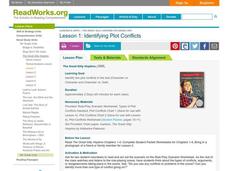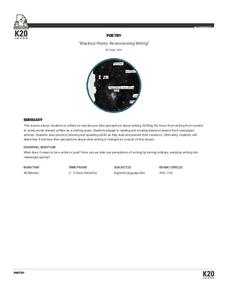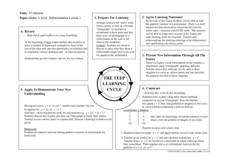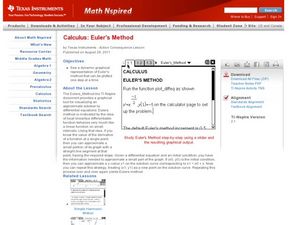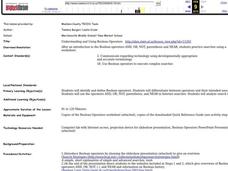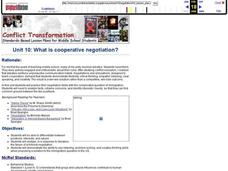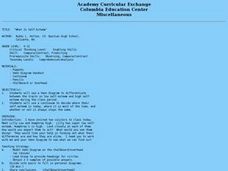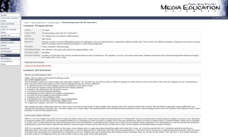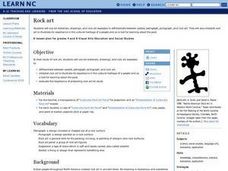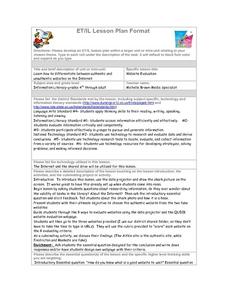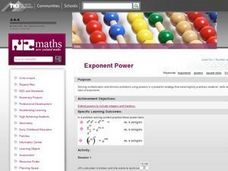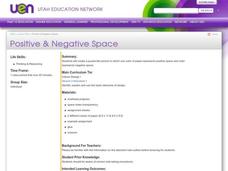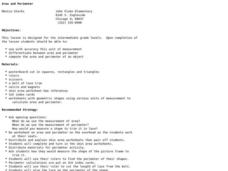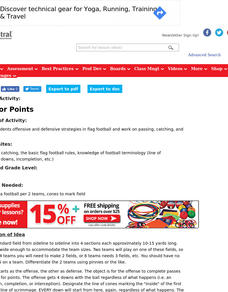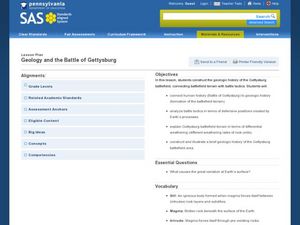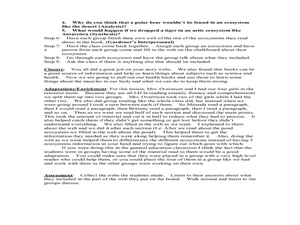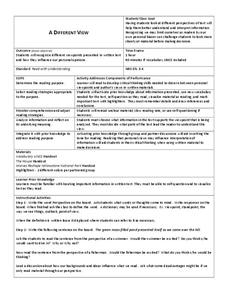Read Works
Identifying Plot Conflicts
Examine the conflicts in The Great Gilly Hopkins by Katherine Paterson. The strategy outlined here, which could be used for a variety of texts, focuses on the type of conflict, who is involved, and what causes the conflict. Class members...
EngageNY
Developing Reading Fluency: Criteria for Reading Aloud
Third graders develop their reading superpowers in a lesson plan on fluency. After first listening to an audio recording or teacher read aloud, the class works together identifying criteria for fluent reading, focusing on phrasing, rate,...
EngageNY
Developing Reading Fluency: Selecting a Text and Practicing Reading Aloud
Young readers continue to strengthen their fluency skills with a text of their choosing. The teacher first engages the class with an audio recording or read-aloud of a short poem, modeling for children how to read fluently. Next it's...
K20 Learn
Blackout Poetry: Re-Envisioning Writing
Shed light on the beauty of language with a great poetry activity. After learning about Austin Kleon's blackout poetry model, pupils respond to some of his poetry and use it as a model to produce their own. Young writers also share their...
Curated OER
Math- A Level Differentiated Lesson
Students investigate the gradient function of a polynomial and they conduct a class discussion about its meaning. Then students use graphing software in order to examine tangents that can be seen visually to aid those who need visual...
Curated OER
Learning to Analyze Characters
Learners discover writing strategies authors use to enhance characters. In this character writing lesson, students are read the Knuffle Bunny books by Mo Willems and analyze the story, characters and settings as they listen....
Curated OER
Euler's Method
Learners identify Euler's method of graphing in this calculus lesson. They approximate values of a function and check their work using EM. They also differentiate equations at an exact point.
Curated OER
Proofreading
Fourth graders explore the proofreading process. They practice proofreading for errors in sentence structure, usage, and mechanics. Students develop strategies for proofreading and differentiate between commonly confused words.
Curated OER
Understanding and Using Boolean Operators
Young scholars identify and define Boolean operators. They differentiate between operators and their intended uses. They use the operators AND, OR, NOT, parenthesis, and NEAR in Internet searches and analyze search results. They...
Curated OER
What is cooperative negotiation?
Tenth graders differentiate between positions, interests, and values. For this current events lesson, 10th graders analyze, in a response to literature, the failure of a fictional negotiation. Students demonstrate the ability...
Curated OER
What Is Self-Esteem?
Young scholars use a Venn diagram to differentiate between traits of low self-esteem and high self-esteem. They use a continuum to decide where their self-esteem is on a daily basis noting changes.
Curated OER
Phenomenology Lesson Plan #6: Theme Part 1
Pupils practice differentiating between categories of art and entertainment. They also practice telling the difference between character themes and universal themes. They find a text to relate to themselves and write about it.
Curated OER
Rock art
Learners study rock art they use art materials, colored photographs and rock art examples to: differentiate between symbol, petroglyph, pictograph, and rock art. They interpret rock art to illustrate its importance in the cultural...
Curated OER
Website Evaluation
Students examine how to differentiate between authentic and unauthentic websites on the Internet. They view and discuss a photo of a shark that is a hoax, then discuss the eight ways to evaluate websites. Students then evaluate three...
Curated OER
Exponent Power
Students explore multiplication and division problems using exponents. Students examine positive, negative and zero powers. They relate powers to geometric sequences. Students devise strategies and discover rules of exponents.
Curated OER
Positive & Negative Space
Students review and differentiate between positive and negative space, view teacher sample, and cut out shapes to create puzzle-like picture in which one color of paper represents positive space and one color represents negative space.
Curated OER
Area and Perimeter
Young scholars explore area and perimeter. In this math lesson plan, students differentiate between area and perimeter and compute the area and perimeter of an object.
Curated OER
To teach s
Students learn offensive and defensive strategies in flag football and work on passing, catching, and defending.
Curated OER
Pass for Points
Students participate in offensive and defensive strategies in flag football and work on passing, catching, and defending.
Curated OER
Picture Perfect: Reading and Narrative Writing
Students will create a fictional narrative based on the cover of a picture book provided by the teacher. In this narrative writing instructional activity students incorporate all story elements and use strategies to engage the reader.
Pennsylvania Department of Education
Adding and Subtracting Three-Digit Numbers by Jumping
Second graders use data to graph information and draw conclusions. In this instructional activity on data analysis, 2nd graders practice gathering, sorting, comparing, and graphing data. Students differentiate data that can and cannot...
Curated OER
Geology and the Battle of Gettysburg
Students create geologic maps of the Gettysburg battlefield. In this geologic skills lesson, students consider the variations of Earth's surfaces and explore strategies employed by the North and South in the Battle of Gettysburg to...
Curated OER
Graphic Organizers Aid Comprehension
Students create story webs to aid comprehension of ecosystems. In this reading strategies lesson, students discover the importance of organizing information while reading a nonfiction text. Students produce story webs to communicate...
Curated OER
A Different View
Readers need to understand how their personal view point may differ or change how they see the view point found in a written text. Third graders read two informational pieces and fill out a graphic organizer to help them differentiate...
